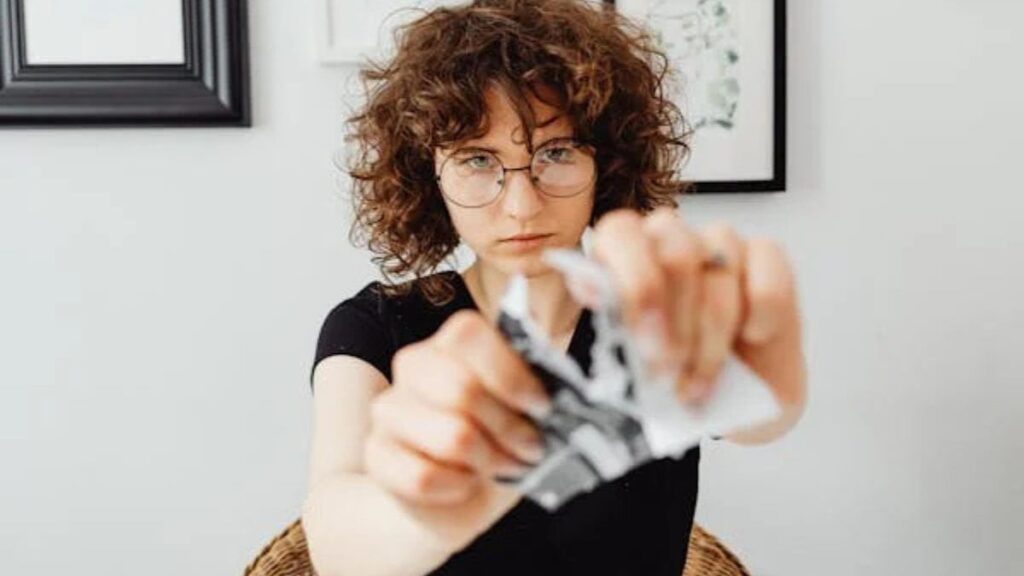Nail biting, also known as onychophagia, is a common habit that affects both children and adults. It can often be seen as a nervous or stress-driven reaction, but it can also be a deeply ingrained habit. For many, this behavior becomes difficult to break, despite the negative impact it can have on the nails, surrounding skin, and overall health. The good news is that there are various strategies and techniques available to help break the cycle of nail biting. This comprehensive guide will provide you with everything you need to understand, address, and ultimately stop biting your nails for good.

What Is Nail Biting?
Nail biting is the act of chewing or gnawing on your nails, often as a response to feelings of anxiety, boredom, or stress. This behavior may begin in childhood but can persist into adulthood if left unchecked. While it may seem like a harmless habit, nail biting can have significant consequences, including damaged nails, infections, and the transfer of germs to your mouth. It can also be a sign of underlying emotional issues, such as anxiety, which may require attention. Understanding the root causes of nail biting is crucial to effectively managing and eliminating the habit. So, if you’re asking yourself how to stop biting your nails, the first step is acknowledging why you’re doing it in the first place. Now, let’s discover the main triggers.
Understanding the Psychological Triggers Behind Nail Biting
For many, nail biting is a subconscious response to stress or anxiety. When faced with stressful situations, individuals may not realize they are biting their nails as a coping mechanism. This behavior can also be triggered by other emotions like frustration, nervousness, or even boredom. In some cases, it can be an unconscious habit that has been repeated so frequently that the individual is unaware of when it starts. Recognizing the emotional triggers behind nail biting is an important step toward addressing the habit effectively. This might involve identifying specific situations or feelings that prompt the behavior and developing healthier coping strategies to replace the urge to bite.
The Impact of Nail Biting on Your Health and Appearance
While nail biting might seem like a minor habit, it can have significant health and cosmetic consequences. First and foremost, it can lead to damaged nails that may take weeks or even months to grow back. In extreme cases, persistent nail biting can cause permanent damage to the nail bed, leading to scarring. Additionally, biting your nails exposes your mouth to harmful bacteria and germs from your nails, which can lead to infections or other oral health problems. Nail biting can also lead to hangnails and painful skin conditions around the nails, further complicating the issue. In short, breaking the habit not only improves the appearance of your nails but also contributes to better overall hygiene and well-being.
Strategies to Stop Nail Biting: Practical Tips
Once you understand what is causing your nail-biting habit and the consequences of continuing it, you can begin to take action. Several strategies have proven effective in breaking this habit, many of which focus on changing the way you interact with your nails and hands.
One common approach is to trim your nails short, making it less tempting to bite them. If there’s less nail to bite, it can help reduce the urge to chew. Another method involves using bitter-tasting nail polishes, specifically designed to deter nail biting. These products create an unpleasant taste in the mouth when your nails come into contact with your lips, discouraging the habit. If the habit is a result of anxiety, it may be helpful to explore relaxation techniques such as deep breathing, mindfulness, or even therapy to address the underlying emotional causes.
Cognitive Behavioral Techniques to Stop Biting Your Nails
Cognitive behavioral therapy (CBT) is one of the most effective techniques for breaking habits like nail biting. CBT involves identifying the negative thought patterns and behaviors associated with the habit and then working to change them. The goal is to replace the habit with healthier behaviors or coping mechanisms. For example, when the urge to bite your nails arises, you might use a different, more productive behavior to manage the stress or anxiety that triggers the habit. In addition to professional therapy, there are self-help techniques within CBT that can be implemented, such as self-monitoring, setting small goals, and rewarding progress.
The Role of Support Systems in Overcoming Nail Biting
Sometimes, breaking a habit requires more than just self-discipline—it also involves the support of friends, family, or even professionals. Having a support system can help you stay accountable and motivated as you work on stopping nail biting. Let those close to you know about your goal and encourage them to gently remind you when they notice the habit. Some people also find it helpful to join support groups or online communities where others are working on similar issues. Sharing your struggles and successes with others can provide a sense of camaraderie and reassurance.
Nail biting may be a common habit, but it doesn’t have to control your life. Remember, change takes time, so be patient and persistent with yourself. In the end, you’ll not only have healthier nails but also a greater sense of confidence in overcoming this habit.







